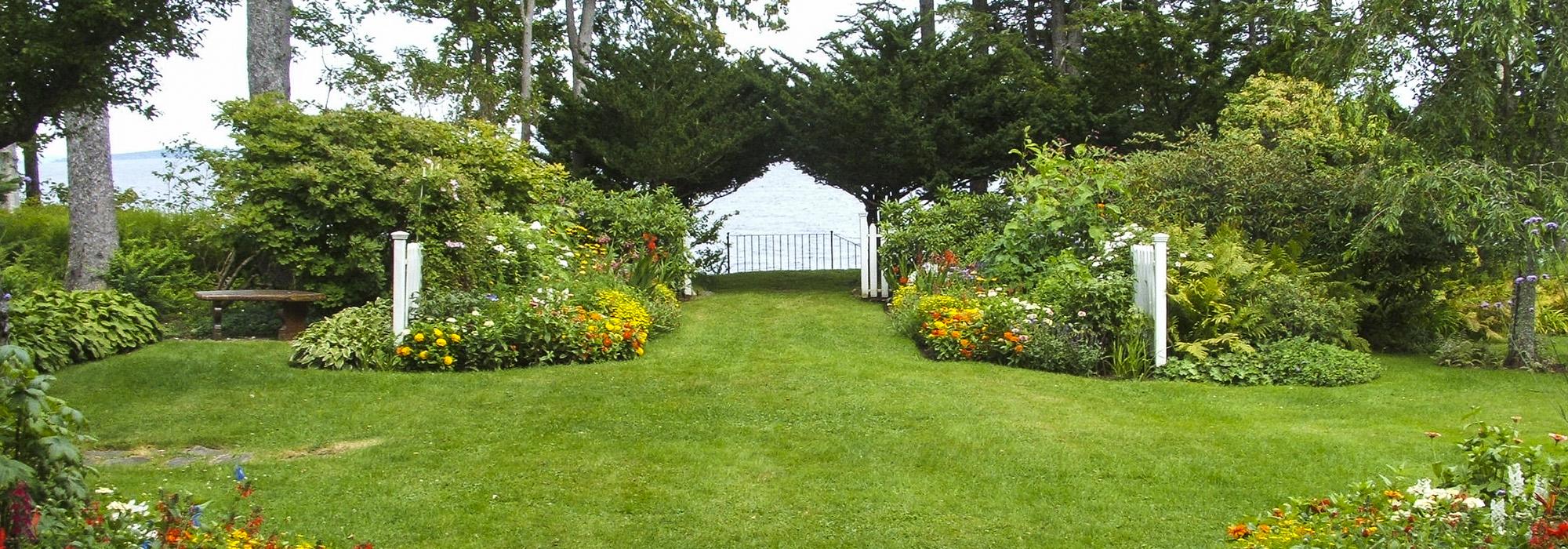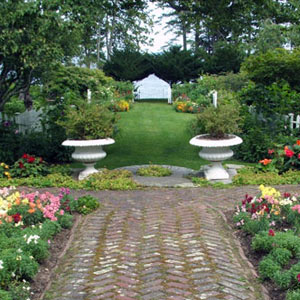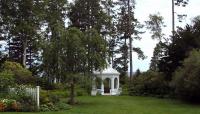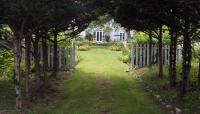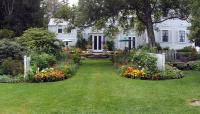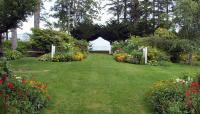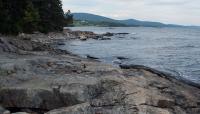Landscape Information
In 1806 Thomas McCobb returned to Phippsburg expecting to inherit the family homestead. When it was given to his stepbrother instead, McCobb built an adjacent Federal-style home to overshadow the older house, giving the house its name. Donald Dodge purchased the deteriorated house in 1925 and moved it 85 miles by ocean-going barge to Rockport. He hired architects Tilden and Register to enlarge the house and landscape architect Robert Wheelwright to design a Colonial Revival landscape. Dodge and Wheelwright planned a series of outdoor rooms and formal flower gardens with picket fences, millstone steps, axial, linear paths and framed views. Dodge also designed gardens of lilies, cut flowers, and herbs and the “wild garden” with meandering paths, rhododendrons, and wildflowers.
Some of the high-maintenance gardens were downsized following Dodge’s death in the 1970s, but those closest to the house remain intact today. The front landscape features original herring-bone brick paths, mature shade trees, and lawn panels bordered by perennials and picket fences. Behind the house the more elaborate Long Garden consists of a wide lawn path flanked by flower beds and picket fences, with seating areas on each side. It terminates at a bluff and seating area overlooking Penobscot Bay, with a gazebo-like summer house designed by Wheelwright. Spite House was documented in the National Park Service's Historic American Buildings Survey in 1960 and listed in the National Register of Historic Places in 1974.



